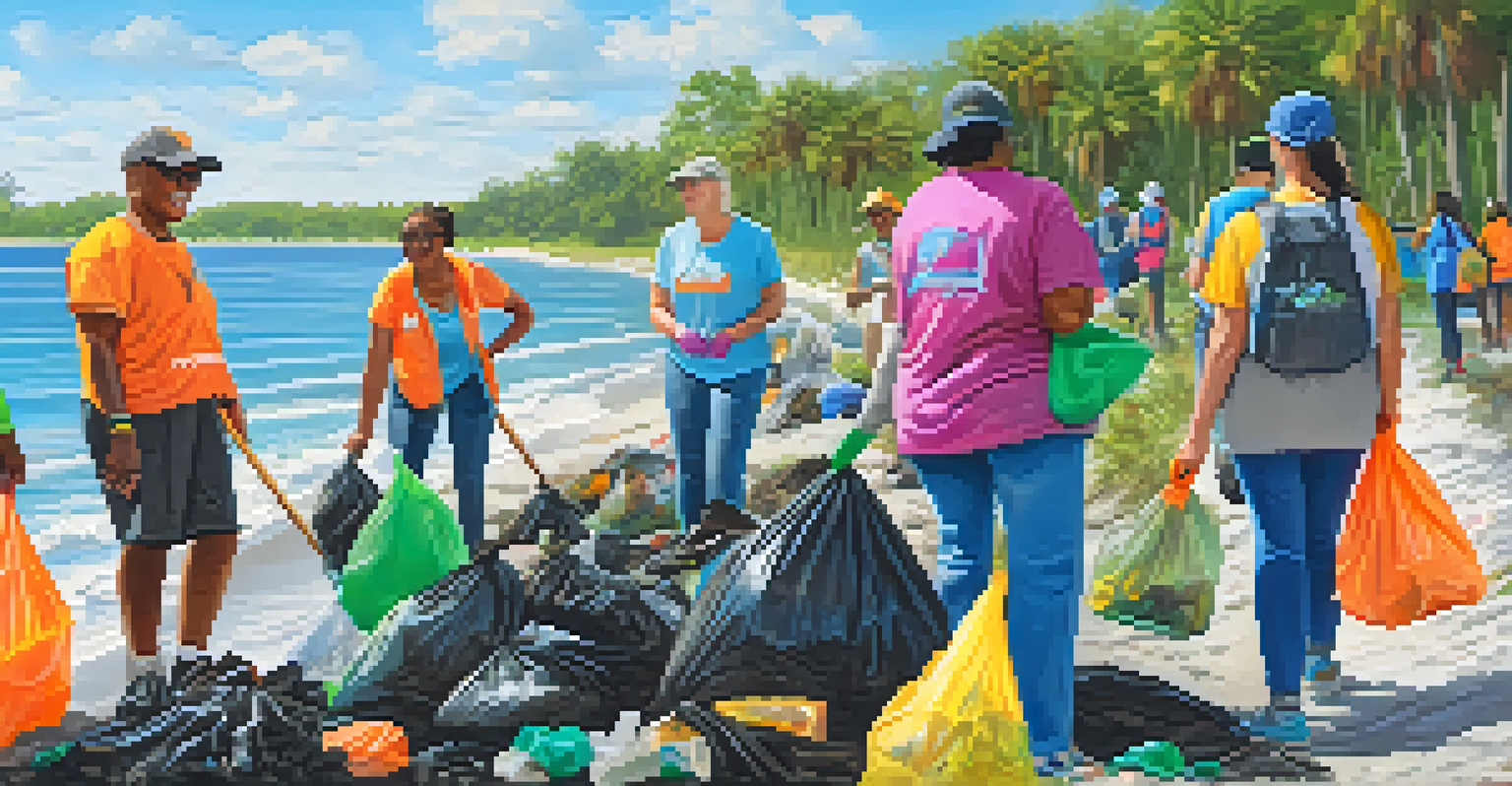Tampa Bay Restoration: Addressing Water Quality Issues

Understanding Tampa Bay's Water Quality Challenges
Tampa Bay, a vibrant ecosystem, faces significant water quality challenges. Pollution from urban runoff, wastewater, and stormwater has led to deteriorating conditions for marine life. These issues not only impact the bay's natural beauty but also threaten local economies reliant on fishing and tourism.
We won't have a society if we destroy the environment.
Many residents are unaware of how these pollutants can affect the water they enjoy for recreation. Algal blooms, caused by nutrient overload, can lead to harmful effects on both marine life and human health. Understanding these challenges is the first step toward finding effective solutions.
By recognizing the root causes of water quality issues, we can begin to address them effectively. Community awareness and engagement play a crucial role in protecting Tampa Bay’s precious resources. It’s a collective effort that requires everyone’s participation.
The Importance of Restoration Projects
Restoration projects are essential for improving water quality in Tampa Bay. These initiatives aim to restore natural habitats, reduce pollution runoff, and enhance water filtration. By investing in these projects, we can create a healthier environment for wildlife and people alike.

For example, initiatives to restore wetlands can significantly reduce the amount of pollutants entering the bay. Wetlands act as natural sponges, filtering out harmful substances while providing a habitat for various species. The benefits of these projects extend beyond water quality; they also support biodiversity and strengthen the ecosystem.
Pollution Threatens Tampa Bay's Health
Urban runoff and wastewater pollution are significantly impacting Tampa Bay's ecosystem and local economies.
Moreover, restoration projects often foster community involvement, encouraging residents to take an active role in caring for their environment. This sense of ownership can lead to more sustainable practices and a deeper appreciation for Tampa Bay’s natural resources.
Collaborative Efforts in Water Quality Management
Addressing water quality issues in Tampa Bay requires collaboration among multiple stakeholders. Local governments, environmental organizations, and community groups must work together to create effective strategies. By combining resources and expertise, they can tackle the challenges more efficiently.
The environment is where we all meet; where we all have a mutual interest; it is the one thing all of us share.
One successful example of this collaboration is the Tampa Bay Estuary Program, which brings together various partners to develop and implement restoration projects. This cooperative approach ensures that all voices are heard and that solutions are tailored to the unique needs of the bay.
Additionally, these partnerships can help secure funding for necessary projects, enabling more extensive and impactful restoration efforts. Together, they can create a unified vision for a cleaner, healthier Tampa Bay that benefits everyone.
The Role of Technology in Restoration Efforts
Technology plays a vital role in monitoring and improving water quality in Tampa Bay. Innovative tools and techniques help scientists track pollution sources, assess ecosystem health, and evaluate the effectiveness of restoration projects. This data-driven approach allows for more informed decision-making.
For instance, the use of remote sensing technology enables researchers to identify areas of concern, such as algal blooms or sediment runoff. By analyzing this information, they can implement targeted interventions to address specific issues. This proactive approach is essential for maintaining and restoring the bay's health.
Restoration Projects Enhance Water Quality
Investing in restoration initiatives, like wetland restoration, is crucial for filtering pollutants and supporting biodiversity.
Moreover, technology fosters community engagement through accessible data and interactive platforms. Residents can stay informed about water quality and participate in local initiatives, empowering them to contribute to the restoration efforts.
Community Involvement in Water Quality Improvement
Community involvement is crucial in the fight to improve Tampa Bay's water quality. Local residents can play an active role by participating in clean-up events, advocating for sustainable practices, and supporting restoration initiatives. When the community comes together, the impact can be substantial.
Educational programs and workshops can also help raise awareness about the importance of protecting water quality. By providing residents with the knowledge and tools they need, we can encourage responsible behaviors that contribute to the health of the bay. Simple actions, like reducing fertilizer use and properly disposing of waste, can make a difference.
Additionally, local organizations often organize volunteer opportunities for residents to engage in hands-on restoration efforts. These experiences not only strengthen community ties but also foster a sense of pride in preserving Tampa Bay for future generations.
Legislation and Policy for Water Quality Protection
Legislation and policy play a pivotal role in protecting Tampa Bay's water quality. Local and state governments must enact and enforce regulations that address pollution sources and promote sustainable practices. Strong policies create a framework for effective management and restoration efforts.
For example, regulations limiting nutrient runoff from agriculture and urban areas are crucial for reducing pollution levels. Compliance with these laws can significantly improve water quality and protect aquatic ecosystems. Policymakers must work closely with scientists and community members to ensure that regulations are effective and practical.
Community Engagement Drives Change
Active community involvement in clean-up efforts and advocacy is essential for improving water quality and fostering a sense of stewardship.
Furthermore, public support for water quality initiatives can lead to more robust policies. When residents advocate for cleaner water and healthier ecosystems, elected officials are more likely to prioritize these issues. This citizen engagement is vital for driving meaningful change in Tampa Bay.
The Future of Tampa Bay: A Collaborative Vision
The future of Tampa Bay depends on our collective commitment to restoring and protecting its water quality. By working together—government, organizations, and residents—we can create a sustainable environment that benefits both people and wildlife. A collaborative vision will guide our efforts and ensure long-term success.
As we implement restoration projects and adopt sustainable practices, we can envision a healthier bay teeming with life. This vision is not just about improving water quality; it’s about preserving a way of life that connects the community to its natural surroundings. Together, we can create a legacy of stewardship for future generations.

Ultimately, our actions today will shape the future of Tampa Bay. By prioritizing restoration and fostering collaboration, we can ensure that this beautiful ecosystem thrives for years to come. The journey may be challenging, but with dedication and partnership, a cleaner, healthier Tampa Bay is within reach.